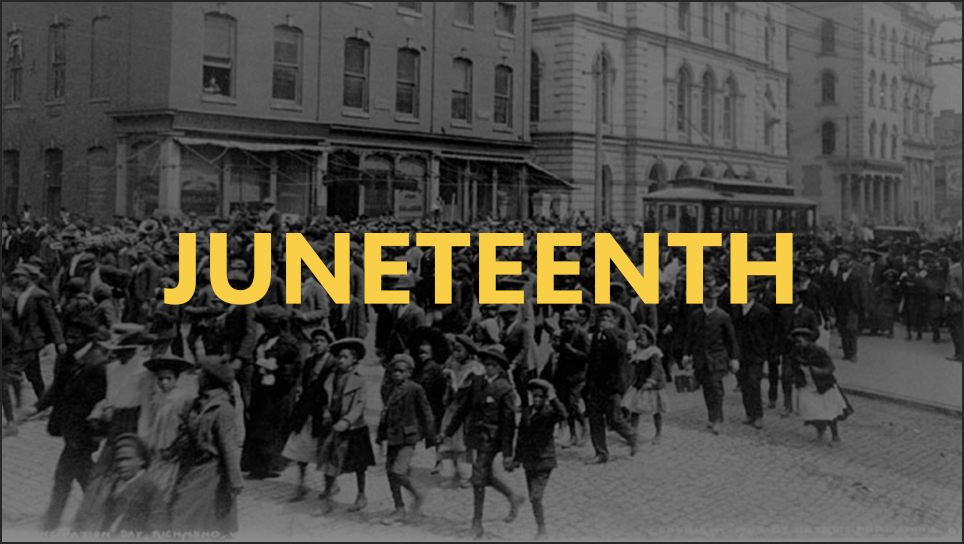Celebrating Culture
“The people of Texas are informed that, in accordance with a proclamation from the Executive of the United States, all slaves are free. This involves an absolute equality of personal rights and rights of property between former masters and slaves, and the connection heretofore existing between them becomes that between employer and hired labor. The freedmen are advised to remain quietly at their present homes and work for wages. They are informed that they will not be allowed to collect at military posts and that they will not be supported in idleness either there or elsewhere.”
General Orders, Number 3; Headquarters District of Texas, Galveston June 19, 1865
Reflection
From Oppression to Expression
The General Order marked a legal end to slavery, a crucial step away from oppression. However, true liberation involves more than just legal status; it requires the freedom to express one’s culture, faith, and full humanity. This deeper understanding of freedom aligns with Jesus’ message of liberation.
“The Spirit of the Lord is upon me, because he has anointed me to proclaim good news to the poor. He has sent me to proclaim freedom for the prisoners… to set the oppressed free…”
Luke 4:18–19 NRSV (Jesus quoting Isaiah)
Facts About Juneteenth
What legal event does General Orders, Number 3 mark in relation to Juneteenth?
General Orders, Number 3 marked the legal end to slavery in Texas.
Who pushed for Juneteenth to be a holiday?
The primary activist credited with rallying support to make Juneteenth a federal holiday is Opal Lee, often referred to as the “Grandmother of Juneteenth”. At age 89 she set off on a walk from Fort Worth, Texas to Washington, D.C., to raise awareness about Juneteenth. She wanted pto make people understand that Juneteenth was not just a festival. In January 2017, she delivered to the U.S. Congress a petition with 1.5 million signatures calling for a national holiday. U.S. President Joe Biden signed federal legislation making Juneteenth a national holiday in June 2021, with Mrs. Lee at his side.
In the context of Juneteenth and General Orders, Number 3, how did the declaration of freedom both enable the flourishing of African American culture and simultaneously present limitations to its full expression?
General Orders, Number 3 declared freedom for enslaved people in Texas, which enabled the possibility for previously suppressed cultural practices to emerge and flourish as people could now, at least legally, begin to rebuild their communities and traditions openly. This included seeking out separated family members, establishing churches, and celebrating their liberation.
However, the order’s instruction to “remain quietly at their present homes and work for wages” presented limitations. This “advice” reflected societal anxieties and efforts to control the newly freed population. It discouraged large gatherings, community-wide celebrations, and migrations crucial for cultural expression and family reunification. Additionally, the emphasis on a labor relationship often resulted in conditions resembling slavery, restricting free time needed for cultural activities.
Therefore, while Juneteenth marked a vital step towards freedom, the reality was that true freedom and the full expression of culture were met with resistance and limitations, creating a complex experience of liberation alongside ongoing challenges.
What gaps in the Emancipation Proclamation did General Orders, Number 3 and the 13th Amendment address?
The Emancipation Proclamation, issued in 1863, declared enslaved people free in Confederate-held territory. However, it had limitations:
- It did not apply to enslaved people in border states that remained in the Union (Delaware, Maryland, Kentucky, and Missouri).
- It was dependent on the Union winning the Civil War to be fully enforced.
To address these gaps:
- General Orders, Number 3: Addressed the gap in enforcement. By being issued in Texas on June 19, 1865, it specifically brought the news and enforcement of emancipation to a region where it had been delayed.
- 13th Amendment: Addressed the legal gap. Ratified in 1865, it abolished slavery throughout the entire United States, regardless of location or the outcome of the war in specific areas, thereby ensuring that freedom was constitutionally guaranteed.

